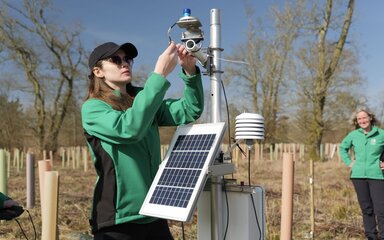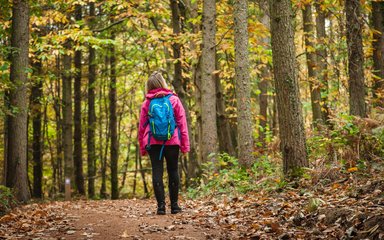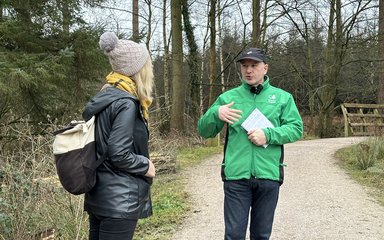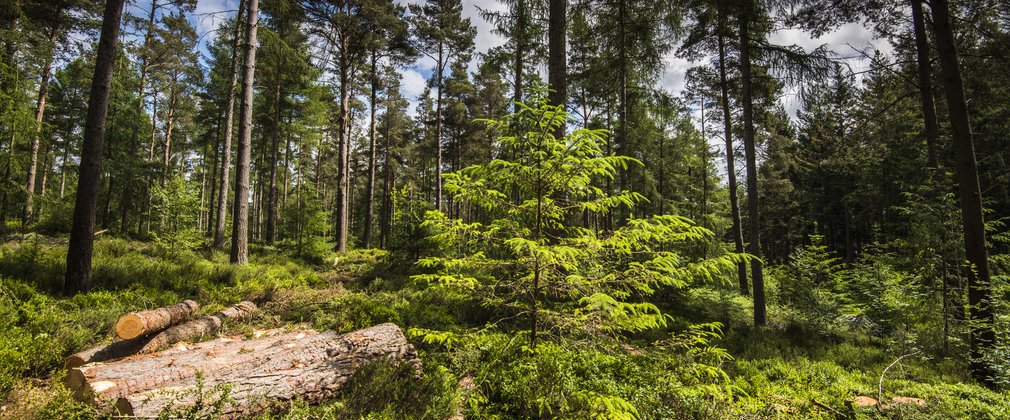
At Forestry England, we live and breathe forests. Using our scale and expertise, we grow and care for the nation's forests for this generation and the next. Find out about our forest management lifecycle, from the initial planning stages to getting our sustainable, homegrown timber to the sawmill.

Planning for people, wildlife and timber
Each forest has a plan. We create forest plans with local communities, partners and experts so that our forests can provide the best balance for people, wildlife and timber. It records how the forest is unique.
Our expert foresters decide on which tree species to plant and where, depending on the landscape and conditions such as the soil type.
We also consider predicted future climate and choose species suited to these changing conditions to give our trees the best chance to thrive in years to come.
Growing from seed and careful planting
Sustainable forestry is based on the natural lifecycle of trees. We collect seeds from trees to grow in our nurseries. The saplings are cared for by our staff to make sure they are healthy and have the best chance at life.
We plant trees to create new woodlands and regenerate forests recently harvested for timber. Planting is usually done by hand during the winter, when the trees are dormant, to limit stress in this fragile stage.
Sometimes there is enough seed in the ground from surrounding trees to develop the required woodland, called natural regeneration. We encourage natural regeneration wherever possible, but this can sometimes take time. Planting saplings ensures a new forest begins to grow more quickly.

Want to learn more about the forest lifecycle? Watch our fascinating video.
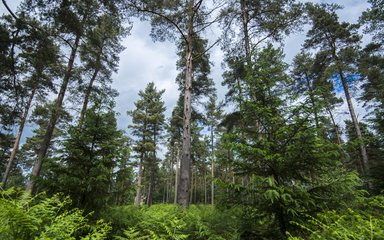
Sure and steady growth
As trees grow over the years, they form a forest. We monitor them as they age for signs of disease or damage. The changing climate means that new pests and diseases are finding a home in our forests, so it's important to make sure our trees are healthy to combat this threat.
Trees absorb carbon dioxide from our atmosphere as they grow, converting it into wood. Using this wood later in the forest lifecycle to make products ensures the carbon can be stored for longer than just the natural life of the tree.
Felling and replanting
Some trees will not grow as well as others. We fell some of the smaller trees to create space for the other trees to grow. This is called thinning. Thinning also lets more light in to the forest floor, which increases the diversity of plants and encourages more wildlife.
Once the forest is fully grown, it's time to harvest the valuable timber. This can happen anywhere between 40 and 150 years after planting, depending on the type of tree.
In some areas of the forest we only remove a few mature trees at a time, so some stands of trees are mixed in age. This is called continuous cover forestry. The land we fell is replanted according to the forest plan and cycle begins again. The nation’s forests are a patchwork of different habitats at different stages of the forest lifecycle.
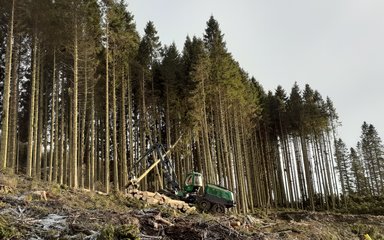

Timber and the uses of wood
Wood is a beautiful, strong and renewable natural material with endless uses. We're the largest grower of sustainable timber in England and our sustainably managed forests produce over a million tonnes of timber a year.
At the sawmill, the timber is cut into different pieces and used in furniture, fences and building materials. Even the bark, wood shavings and sawdust are used. Nothing is wasted.
When you shop for wood and paper products, always make sure to look for the FSC® or PEFC logos. This means they come from forests, like ours, that are managed carefully for the future.

